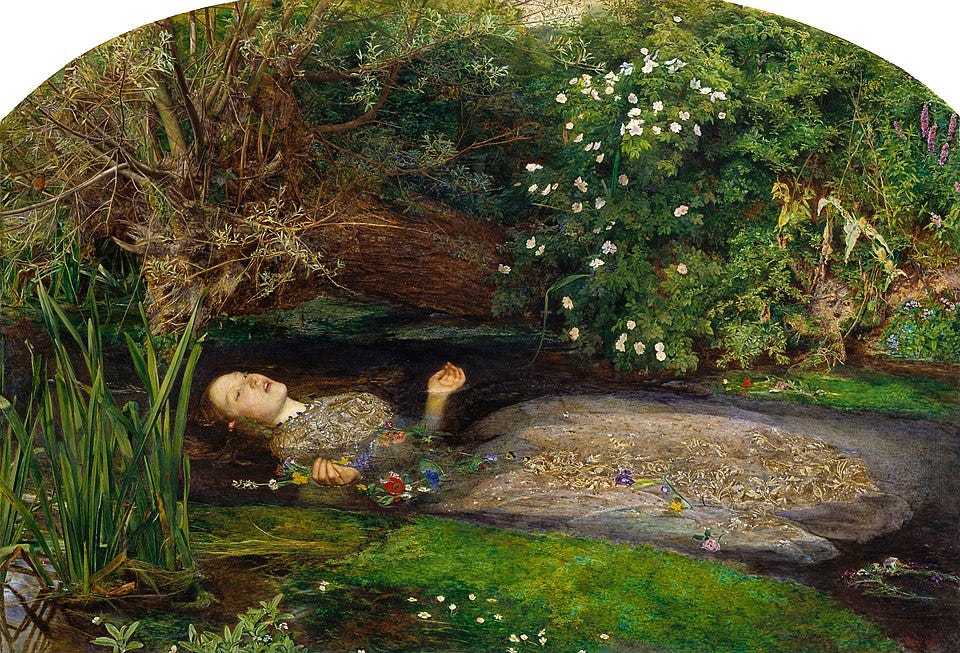Art, Myth, and Literature: The Pre-Raphaelites
In this series, we'll explore the movement that stands at the intersection of art and fantasy.
This essay is the first in the series Art, Myth, and Literature: The Pre-Raphaelites. To read future essays in this series and gain access to the full archive, become a paid subscriber today:

There is a willow grows askant the brook
That shows his hoary leaves in the glossy stream;
Therewith fantastic garlands did she make
Of crowflowers, nettles, daisies, and long purples
That liberal shepherds give a grosser name
But our cold maids do dead men’s fingers call them.
In Act 4 of William Shakespeare’s Hamlet, Queen Gertrude shares devastating news with Laertes—his sister, Ophelia, is dead. Burdened by madness, wild with grief that the man she loved had killed her father, Ophelia fell (or did she jump?) into a brook and drowned.
There on the pendant boughs her crownet weeds
Clamb’ring to hang, an envious sliver broke,
When down her weedy trophies and herself
Fell in the weeping brook. Her clothes spread wide
And mermaid-like awhile t…


